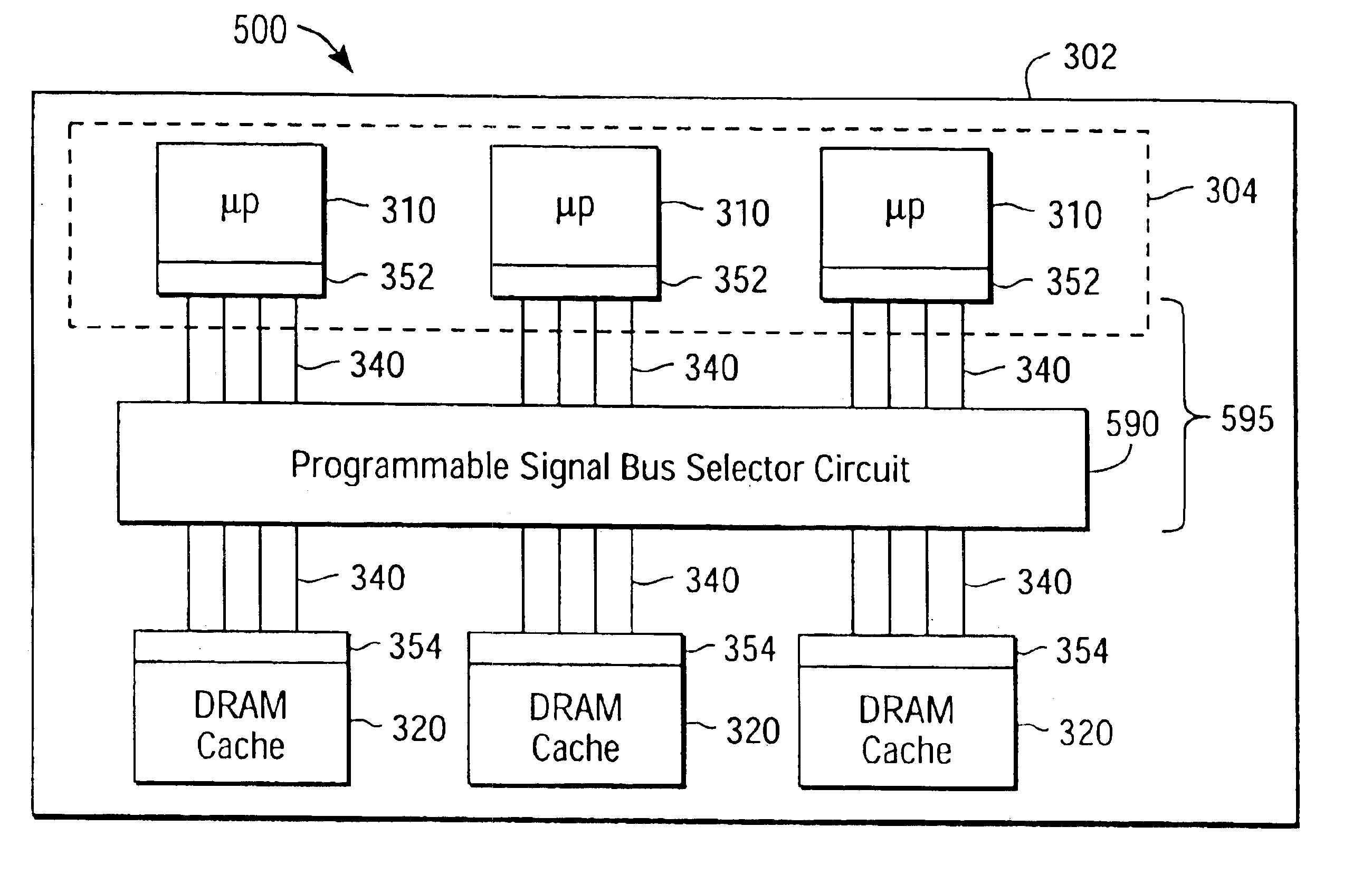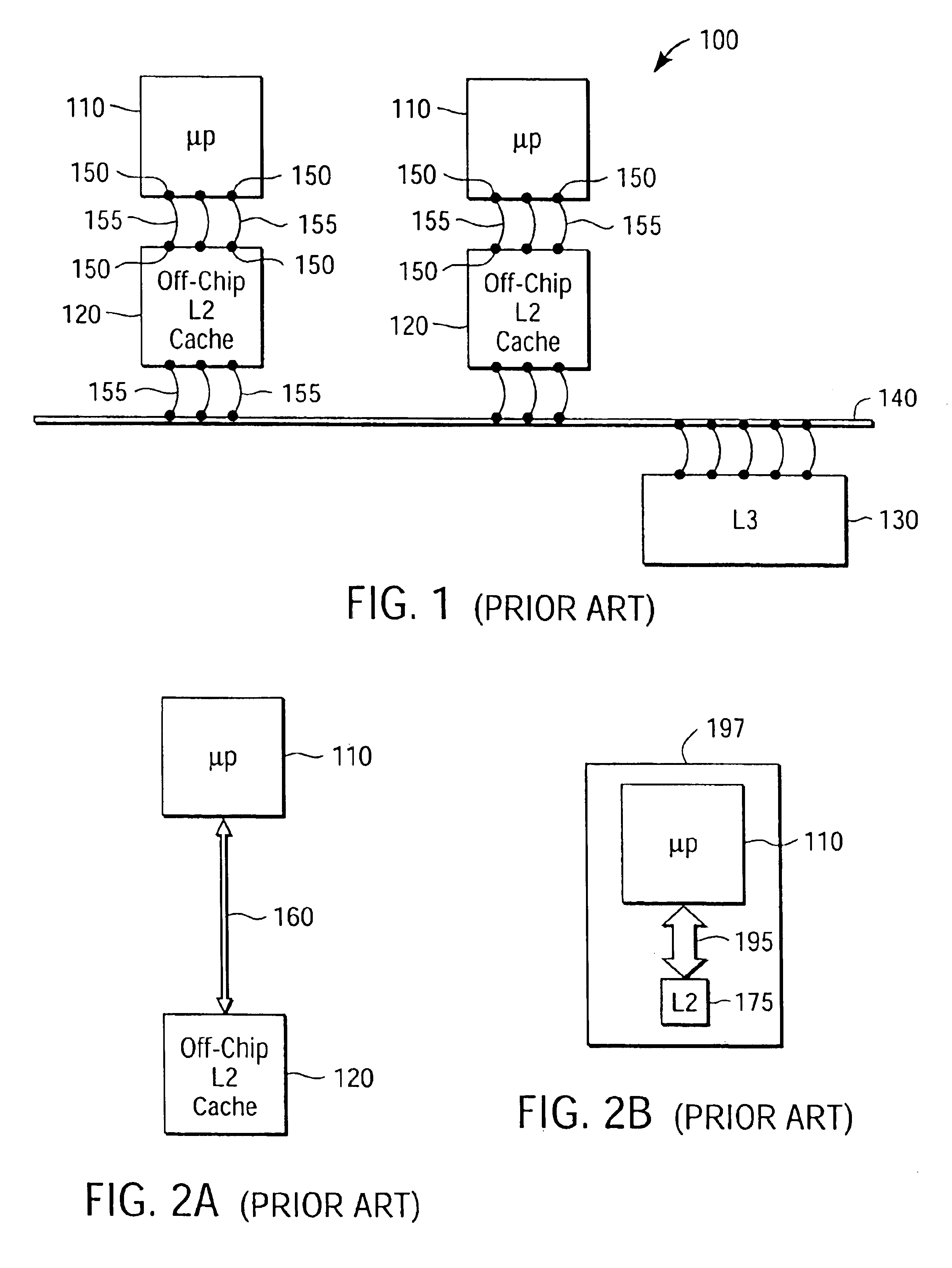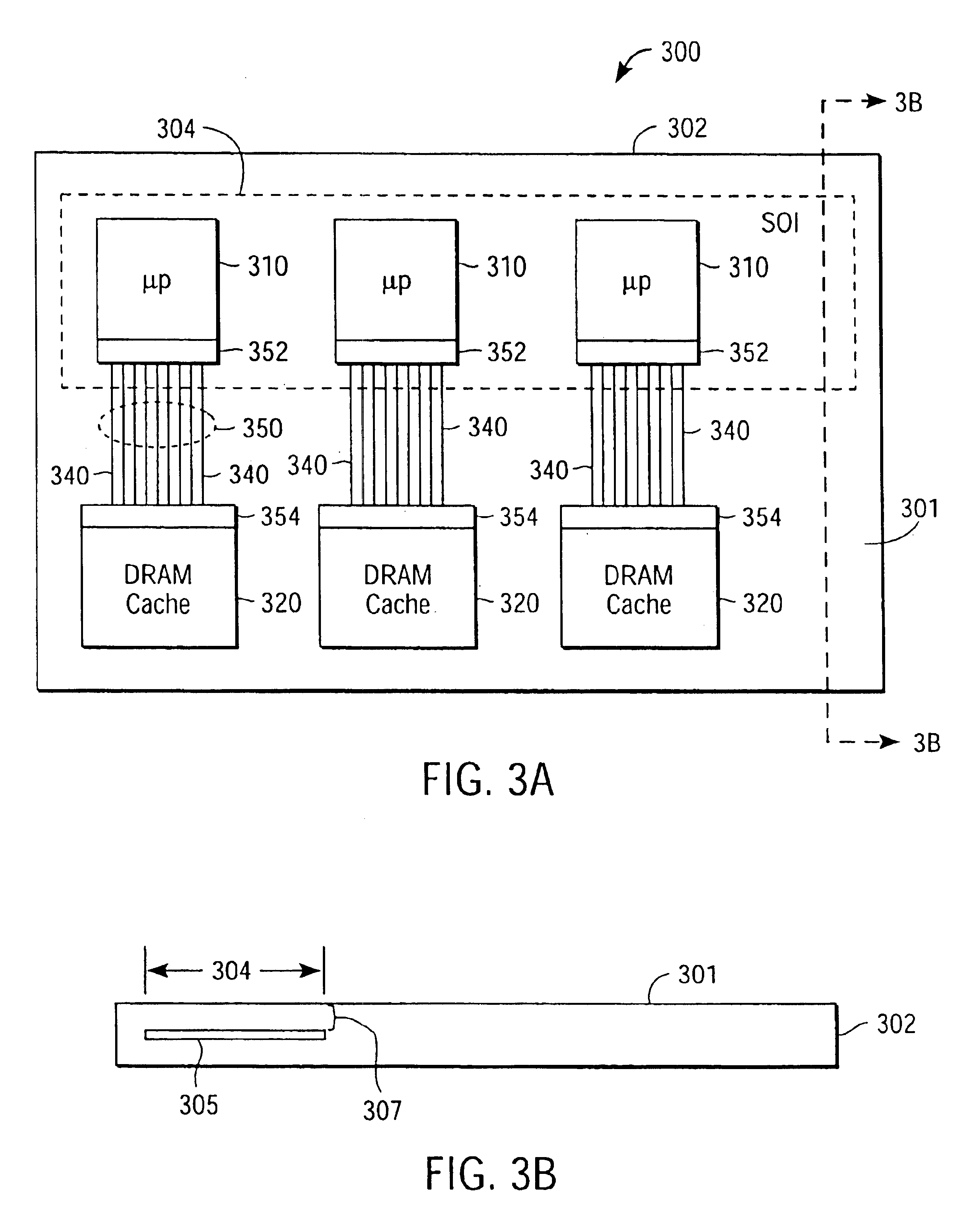Hybrid bulk/silicon-on-insulator multiprocessors
a multi-processor, silicon-on-insulator technology, applied in the direction of memory address/allocation/relocation, fault response, instruments, etc., can solve the problems of large latency (time delay) for communicating data words, the system performance of conventional multi-processors cannot keep up with the improvement in microprocessor performance, and the cost of a longer access time. achieve the effect of improving the yield of a chip
- Summary
- Abstract
- Description
- Claims
- Application Information
AI Technical Summary
Benefits of technology
Problems solved by technology
Method used
Image
Examples
Embodiment Construction
The figures depict a preferred embodiment of the present invention for purposes of illustration only. One of skill in the art will readily recognize from the following discussion that alternative embodiments of the structures and methods disclosed herein may be employed without departing from the principles of the claimed invention.
FIG. 3A is a block diagram illustrating a first embodiment of a chip 300 of the present invention. Chip 300 is an integrated circuit that is preferably formed on a conventional semiconductor substrate die size. Some details are omitted for the purposes of illustration. The inventors of the present application have recognized that recent advances in ultraviolet lithography, optical pattern correction, and phase-shift masking permit a greater than four-fold reduction in the size of high-speed microprocessors compared with microprocessors fabricated by conventional optical lithography. Consequently, as shown in FIG. 3A, chip 300 includes a plurality of micro...
PUM
 Login to View More
Login to View More Abstract
Description
Claims
Application Information
 Login to View More
Login to View More - R&D
- Intellectual Property
- Life Sciences
- Materials
- Tech Scout
- Unparalleled Data Quality
- Higher Quality Content
- 60% Fewer Hallucinations
Browse by: Latest US Patents, China's latest patents, Technical Efficacy Thesaurus, Application Domain, Technology Topic, Popular Technical Reports.
© 2025 PatSnap. All rights reserved.Legal|Privacy policy|Modern Slavery Act Transparency Statement|Sitemap|About US| Contact US: help@patsnap.com



